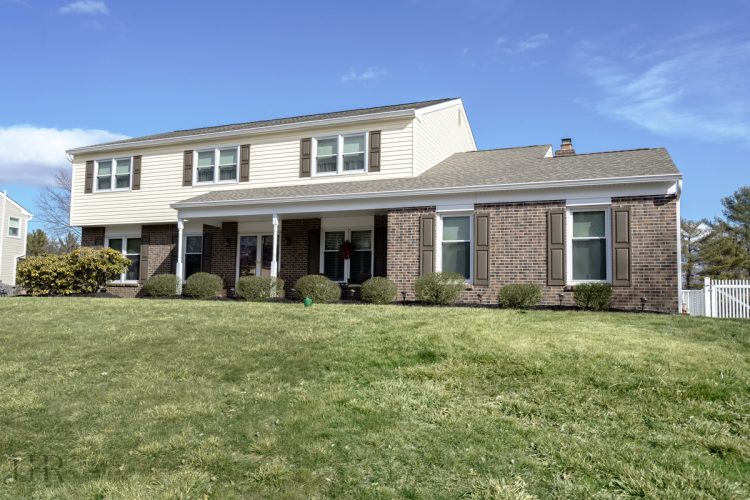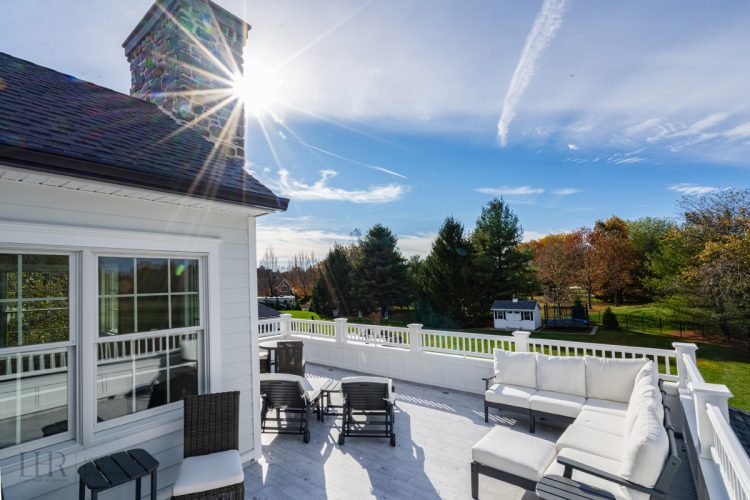Here is a new blog post from a guest author contributing to Lang’s Home Remodeling’s website. All views expressed are those of the author.
When homeowners plan a kitchen renovation, their attention naturally turns to design details: cabinetry, countertops, appliances, and flooring. But few consider the critical foundation that supports all of these choices — namely, the structural integrity of the home. One of the most overlooked threats to any successful kitchen remodel is water damage, often originating from an unlikely culprit: the roof. Enlisting experienced roofing contractors is a proactive step toward safeguarding the investment in a kitchen upgrade.

The Hidden Threat of Roof Leaks
Roof leaks are one of the most common — and costly — surprises uncovered during a kitchen renovation. Because damage can stay hidden until walls or ceilings are opened up, it often catches homeowners off guard. Watch for these key issues:
- Water travels unpredictably: Leaks may start near vents or chimneys but show up as stains far across the ceiling.
- Mold thrives in damp cavities: Moisture trapped in joists, insulation, and wall spaces can lead to mold and mildew, risking both health and structural integrity.
- New materials are at risk: Cabinets, drywall, and flooring installed over damp or weakened areas may degrade quickly or require replacement.
- Roof issues delay remodels: Discovering hidden damage mid-project can stall timelines and drive up renovation costs.
- Leaks aren’t always visible: Minor roof problems can persist for months unnoticed until demolition reveals them during a renovation.
Structural Complications and Delays
Kitchen remodels require precision and careful sequencing, especially when electrical, plumbing, and cabinetry installations are involved. However, water damage can disrupt these plans by degrading the structural integrity of key framing components such as joists, subfloors, and load-bearing walls. Contractors may discover that wood framing is soft, rotting, or warped due to long-term exposure to moisture. In such cases, repairs must be made before continuing with the renovation — an unexpected delay that increases labor costs and project timelines.
The domino effect continues. Damaged drywall must be replaced, flooring might need to be ripped up entirely, and insulation must be removed and reinstalled. These added steps not only inflate your budget but also extend your timeline, often by weeks. And if mold remediation is necessary, costs can skyrocket. What began as a straightforward renovation turns into a complex construction project.
Mold: The Invisible Enemy
Mold thrives in damp, dark environments — exactly the conditions created by roof leaks that travel downward into kitchen ceilings and walls. Even if a leak seems minor, the moisture it introduces can linger in insulation and drywall, creating a perfect storm for microbial growth. During a kitchen renovation, disturbing these mold-infested materials can release spores into the air, posing health risks to occupants and workers alike.
In a humid climate, mold can spread rapidly if not properly addressed. Certified mold remediation must be performed before continuing with the remodel, which adds to the cost and complexity of the job. Beyond health implications, mold can damage wood, stain walls, and create musty odors that undermine the fresh look of a new kitchen.
How Roofing Plays a Central Role
Homeowners often view roofing and kitchen remodeling as unrelated, but they’re deeply connected. The roof protects interior spaces from moisture, and even minor issues can lead to costly problems during a renovation. Missing shingles, damaged flashing, or poor ventilation can allow water to seep in, damaging insulation, framing, or drywall. Before starting a kitchen renovation, schedule a roof inspection to ensure the structure is sound and leak-free.
Reliable roof contractors help uncover hidden risks like cracked seals, sagging gutters, or soft decking. Identifying these early can prevent expensive repairs later, especially if damage is discovered after new cabinets or appliances are installed. A modest investment in a roof check now can safeguard your renovation and avoid major setbacks down the line.

Financial Impact on Renovation Budgets
Kitchen remodel budgets typically focus on materials and labor, but hidden water damage can derail those plans fast. Leaks may require thousands in unexpected structural repairs, forcing cuts to appliances or cabinetry just to stay on budget. Worse, if leaks are discovered after renovations, homeowners might pay twice — removing new cabinets, replacing floors, or repainting ceilings. A minor roof repair could’ve prevented it.
A full home evaluation, including a roofing inspection, helps identify risks early. While it may feel like an extra step, it protects both your investment and the renovation’s long-term success.
Preparing for a Smooth Renovation
To ensure a kitchen remodel goes smoothly from start to finish, consider these steps before the first hammer swings:
- Schedule a roof inspection with a local expert to evaluate the condition of shingles, flashing, underlayment, and attic ventilation.
- Check for signs of water damage around windows, vents, and ceilings in the kitchen area.
- Address existing moisture issues before finalizing design and installation plans. Any detected damage should be repaired in advance.
- Consult both a roofer and your renovation contractor to coordinate timelines and identify potential overlap in repairs and upgrades.
- Review your homeowner’s insurance policy to determine if previous water damage or roof repairs might be covered.
Taking the time to assess and improve the health of your roof creates a stable, dry foundation for your kitchen renovation. It also reduces the chances of costly delays, giving you peace of mind that your investment is protected.
Prevention As Part of the Plan
The success of any kitchen renovation hinges not only on design and craftsmanship but also on the unseen factors behind the walls and above the ceiling. Roofing may not be the most exciting part of a kitchen remodel, but its role is vital. Without a solid, leak-free roof, even the most well-executed renovations are at risk of hidden damage, unexpected costs, and long-term issues.
For homeowners considering a kitchen upgrade, partnering with qualified roofing contractors is one of the smartest steps you can take. Their expertise ensures that your home’s outer shell is as well-prepared as the interior plans you’ve crafted. With a weather-tight roof overhead, your kitchen can truly shine without the threat of water damage dimming your vision.
Author bio: Ricky Salyers is the founder of Lane’s Contracting, a top-quality roofing, siding, and window replacement services company dedicated to providing reliable and professional solutions. Established in 2005, Lane’s Contracting serves the greater Raleigh and Fayetteville, NC areas.